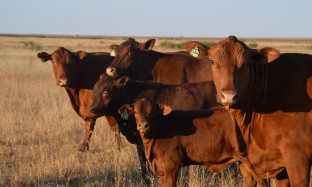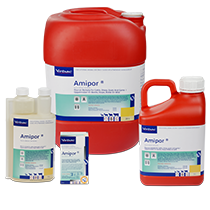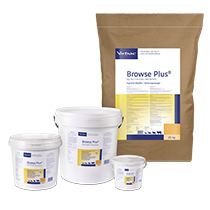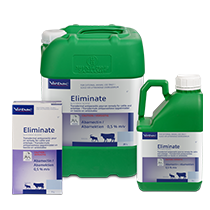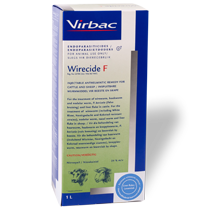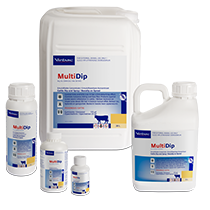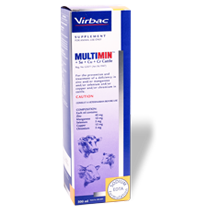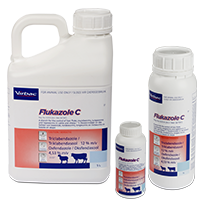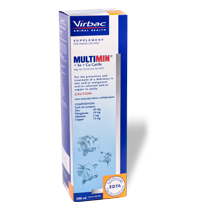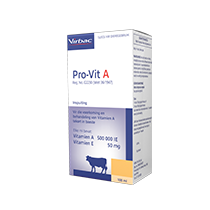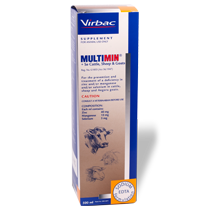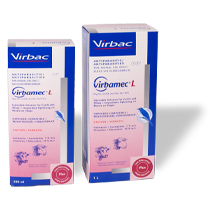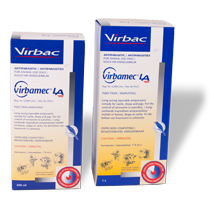
Preparing of Cows for the Breeding Season
Although the foundation of a successful breeding season is laid earlier than 8 weeks before the start of the breeding season, this time can rightly be seen as the beginning of the 22 month cycle of “Conception to Consumption”, since it all starts with successful fertilization.
If things do not go smoothly here, it may result in cows not becoming pregnant in a fixed (90 days) breeding season, or that cows only become pregnant very late in the mating season. Eventually this leads to an extended inter calving period with concomitant economic loss, which can hardly be afforded!
The following areas require the necessary attention:
1. Nutrition and Body Condition
The body condition of cows in the run-up to the mating season is crucial to ensure success during the mating season. During this time (between calving and the mating season) the following happens:
- cows' milk production increases
- cows' reserves are drained
- cows’ lose mass and body condition (especially if the nutritional conditions and / or supplementation are not as desired)
Cows easily lose one body condition point in this time. If they have calved down in an ideal body condition score of 3.5, it can come down to 2.5 (and even less under difficult conditions). It is crucial to get their body condition score back to a minimum of 3 and preferably 3.5 by the time the breeding season begins.
If cows' body condition score drops below 2.5, they will need to receive special attention in terms of their nutrition. Better grazing and / or supplementary feed such as hay or silage, together with a production lick can help. Although this exercise it is not cheap, it is necessary to ensure a good conception rate in the coming mating season.
If it is not done, the next could be your destiny:
- cows that conceive rather later than earlier in the breeding season
- cows that even skip the breeding season does not conceive at all
- an extended inter-calving period
- calves that wean lighter (a combination of lower milk production and calves born late in the next calving season)
This once again emphasizes the importance of cows being in good condition with calving. It is easier and cheaper to maintain or improve the condition of cows over an extended period from weaning to calving, than to have to take drastic steps at this late stage to correct their body condition!
Figure 1 shows the effect of body condition score on conception at the beginning of the breeding season:
Figure 1: The relationship between condition score with mating and conception
Figure 2 is an example of a cow in an acceptable condition at the beginning of the breeding season, while the cow in figure 3’s body condition is not recommended.
Figure 2: Condition ready for mating season Figure 3: Condition not suitable for mating
Consult a nutritionist on the best options for the specific conditions and available resources if the body condition of cows need to be improved.
2. Breeding fitness
Certain conditions can undo all the other management inputs to achieve a good conception rate and calving percentage!
If a sudden decrease in calving percentage is experienced or calving percentage remains low over the long term despite good condition etc., we must look out for the following:
2.1 Vibriosis (Campylobacter fetus)
This is a sexually transmitted disease where the cows are infected by infected bulls. The most common symptoms in the cows are abortions, low conception rates, prolonged calving intervals and uterine infections. Cows do develop immunity but this is not permanent.
Bulls are asymptomatic (do not show symptoms), serve as carriers and are the main source of infection. Vaccination before the start of the breeding season is an option in positive herds.
2.2 Trichomoniasis (Trichomonas fetus)
It is also a sexually transmitted disease where the cows are infected by infected bulls. The most common symptoms are resorptions (early loss of pregnancy), a prolonged calving interval and abortions (but not common). Although most cows become self-healing after a few cycles, they will most likely not be pregnant at the end of the breeding season.
Usually bulls are tested. Bulls that are positive should be slaughtered. Treatment is very difficult, expensive and not always effective. Replace positive bulls with young maiden bulls for breeding (or perform AI).
2.3 Brucellosis (Brucella abortus)
This is one of the most important causes of poor calving percentages! NB. The disease is also a zoonosis - a disease that can be transmitted from animals to humans - mainly through unpasteurized (raw) milk and exposure when abortions, stillborn calves and retained placenta’s are handled without gloves. It is a controlled disease and should be reported to the state veterinarian.
Cows are infected through environmental contamination. The newborn or aborted calf, the placenta and the amniotic fluid of positive cows contains a lot of bacteria and serve as the main source of infection. Cows usually abort once and then calve normally - BUT - will always remain a carrier and source of infection.
Test the herd on a regular basis for the presence of brucellosis, especially if there are positive herds in the immediate area. Biosecurity is crucial. All new animals purchased must be certified brucellosis-free. Keep border fences in good condition.
Vaccines are available to prevent abortions, but can not cure the disease! By law, all heifers must be vaccinated. Two vaccines are available:
- S19 - heifers must be vaccinated before the age of 8 months
- RB51 - may (should) be used on
- heifers - more than once from 4 months up to first mating
- cows - only on non- pregnant cows (may cause abortions)
3. Vaccinations
3.1 Modified “live” vaccines
Vaccination should not be done closer than 30 days before the start of the mating season. Furthermore, it is important to remember that the immune response of cows is not optimal during the first 30 days after calving.
It therefore only leaves us with one month to vaccinate so-called “live” vaccines eg:
BVD, IBR, PI₃, BRSV (combination), Rift Valley Fever, Lumpyskin disease and Three-day stiffness disease. Brucellosis vaccine (RB51) can also cause abortions and must therefore be vaccinated pre-breeding.
NB. Remember that preferably, no more than one "live" vaccine should be administered at the same time.
3.2 Inactivated (“dead”) vaccines
Can / should be given closer to the breeding season eg: Vibriosis and “Pink Eye”
4. Trace Mineral Supplementation
Trace minerals play a very important role in the fertility of cows, especially zinc (Zn), manganese (Mn), copper (Cu) and selenium (Se). Chromium (Cr) can also help with improved energy metabolism, which may benefit body condition.
During calving, the cow loses a third of her trace mineral reserves through the calf, the placenta and the uterine fluid.
The sooner these trace minerals are replenished after calving, the smaller the chance of a trace mineral gap during the mating season. Figure 4 shows the effect of an injectable trace mineral supplement at the critical times (pre-calf and pre-mating) on the liver's copper status.
Figure 4. Liver copper levels after strategic Multimin supplementation
Supplementation of trace minerals by means of an injectable supplement (Multimin Se + Cu + Cr Cattle) before the breeding season can lead to:
- less early embryo resorptions
- improved pregnancy rate - fewer dry cows
- more cows that conceive earlier in the breeding season - fewer “open days” after calving, leads to a more compact calving season
- a better (shorter) intercalving period
The ideal time for the pre-mating injectable supplementation of trace minerals (Multimin Se, Cu, Cr Cattle & ProVit A), is 4-6 weeks before the start of the breeding season. Combine with vaccinations to reduce handling and improve vaccine responses.
5. Parasite control
5.1 Internal parasites:
Internal parasites in cattle are generally considered as 'less important'. Although not always as 'visible' as in sheep, internal parasites can have a negative effect on the condition and performance of cows. A trial conducted by Dr Meaker (1994), showed the positive effect (increased conception rates) of deworming on the reproduction of first calf heifers and second calf cows. (Figure 5 & 6)
Figure 5. Effect of deworming on 1st calving heifers
Figure 6. Effect of deworming on 2nd calving cows
Even the calves of group treated twice benefited by weaning over 4kg heavier, because of the better milk production of their dams.
Liver fluke in particular, can result in large economic losses. In addition to all the other essential functions of the liver, it also affects the production of hormones - which are critical in the run-up to the mating season!
5.2 External parasites:
Treat external parasites (especially ticks) as necessary, to prevent / reduce the transmission of tick-borne diseases and mechanical damage to the udder and teats. A tick load can also negatively affect the appetite of cattle. This may affect conception and milk production.
The control of flies will also reduce irritation, which has a negative effect on grazing time.
6. General Management aspects
If selection can take place, now is a good time to pay attention to the following and identify cows that must not return to the bull:
- cows that calved last in the calving season (they will most likely not become pregnant in the coming mating season)
- cows that are not fully adapted to the farming system (poor condition, not yet have a smooth hair coat, calving late etc.).
- cows that had difficult births and possibly suffered uterus damage or had a prolapse
- cows that developed udder / teat problems
- cows who showed poor maternal characteristics during calving
- cows whose teeth are no longer good enough
Cows that had retained placenta’s should be examined for vaginal discharge / uterine infection and treated early.
Replacement heifers - as heifers that calved for the first time take longer to return to cycle (80-100 days), it is recommended that heifers being mated at least a month before the cows.

